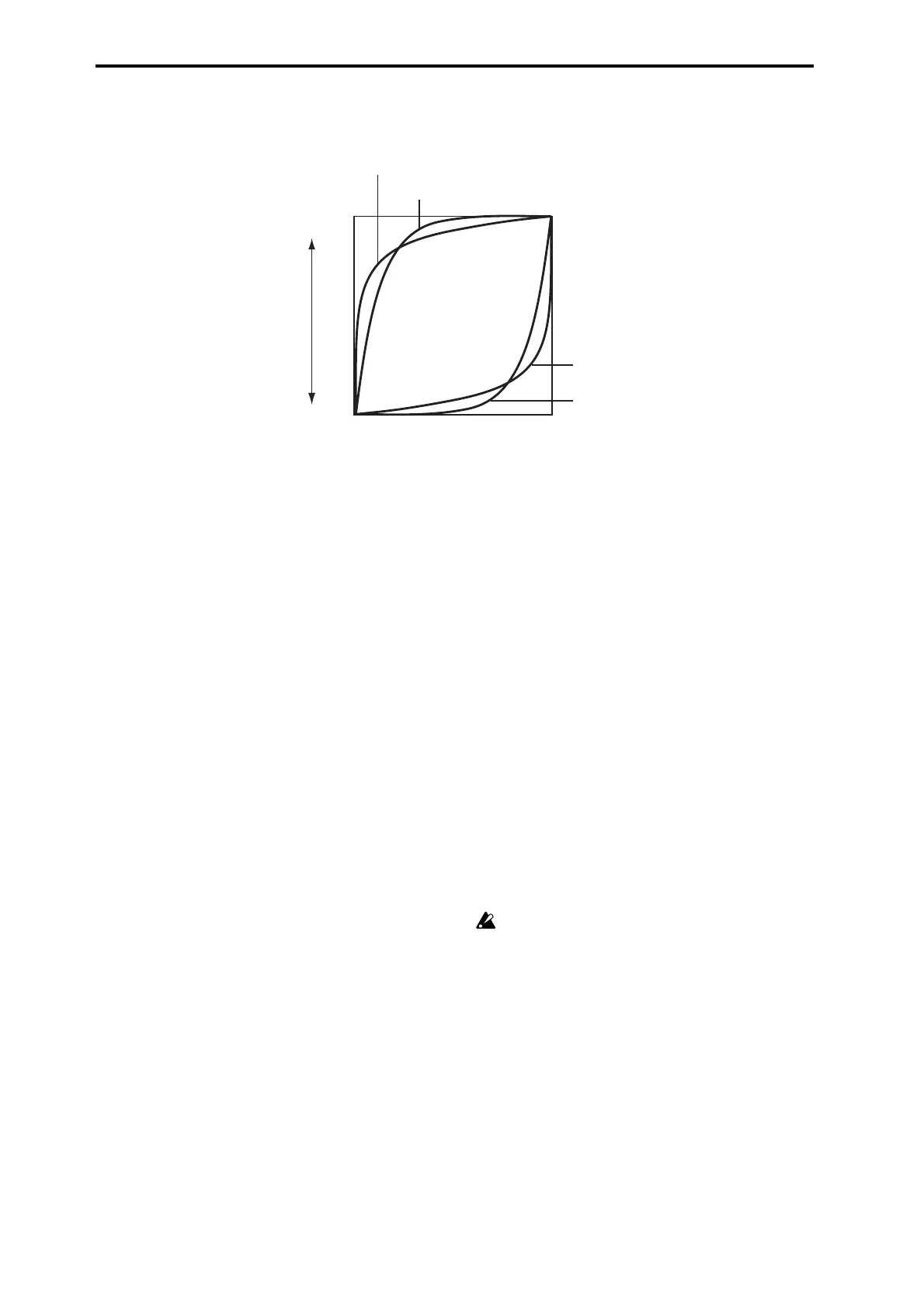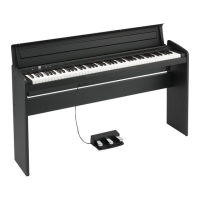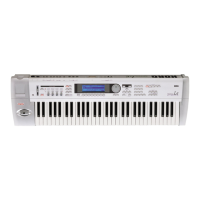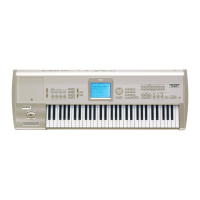KARMA GE guide
586
This characteristic can be used to even more finely tune the effect you are trying to achieve. For example, the top and bottom
curves in both the Log and Exp diagrams (Factor 40 and –40) above are shown together below:
With a Positive Factor (+40):
Exponential Curve (Exp)
75% chance of a choice from the upper 10% of the pool;
25% chance of a choice from the lower 90% of the pool.
Logarithmic Curve (Log)
90% chance of a choice from the upper 25% of the pool;
10% chance of a choice from the lower 75% of the pool.
In general, as the positive factor increases, the Exp Curve
will produce choices more from the very highest part of the
pool, with a choice from the remaining portion more likely
to occur than with the Log Curve. In contrast, the Log Curve
will produce choices more from the mid high to highest part
of the pool, with a choice from the remaining portion less
likely to occur than with the Exp Curve.
Therefore, while both curves will weight the random choices
toward the upper values in the pool, the Log Curve provides
less of a chance of the lower and center values ever
occurring, while allowing a more even distribution among
the upper values. The Exp Curve provides more certainty
that the highest values will be chosen, while still allowing a
more even distribution among the center and lower values
than the Log Curve.
With a Negative Factor (–40):
Exponential Curve (Exp)
75% chance of a choice from the lower 10% of the pool;
25% chance of a choice from the upper 90% of the pool.
Logarithmic Curve (Log)
90% chance of a choice from the lower 25% of the pool;
10% chance of a choice from the upper 75% of the pool.
In general, as the negative factor decreases, the Exp Curve
will produce choices more from the very lowest part of the
pool, with a choice from the remaining portion more likely
to occur than with the Log Curve. In contrast, the Log Curve
will produce choices more from the mid low to lowest part
of the pool, with a choice from the remaining portion less
likely to occur than with the Exp Curve.
Therefore, while both curves will weight the random choices
toward the lowest values in the pool, the Log Curve
provides less of a chance of the higher and center values
ever occurring, while allowing a more even distribution
among the lower values. The Exp Curve provides more
certainty that the lowest values will be chosen, while still
allowing a more even distribution among the center and
upper values than the Log Curve.
A Factor of 0 with any shaped curve yields a linear
table (straight diagonal line), and each of the values in
the pool will have an equal chance of getting chosen.
Log (Factor +40)
X Axis =
Lower
Upper
maxmin
Y Axis =
The Pool
Exp (Factor +40)
Log (Factor –40)
Exp (Factor –40)
Random choice with equal probability
between min and max.

